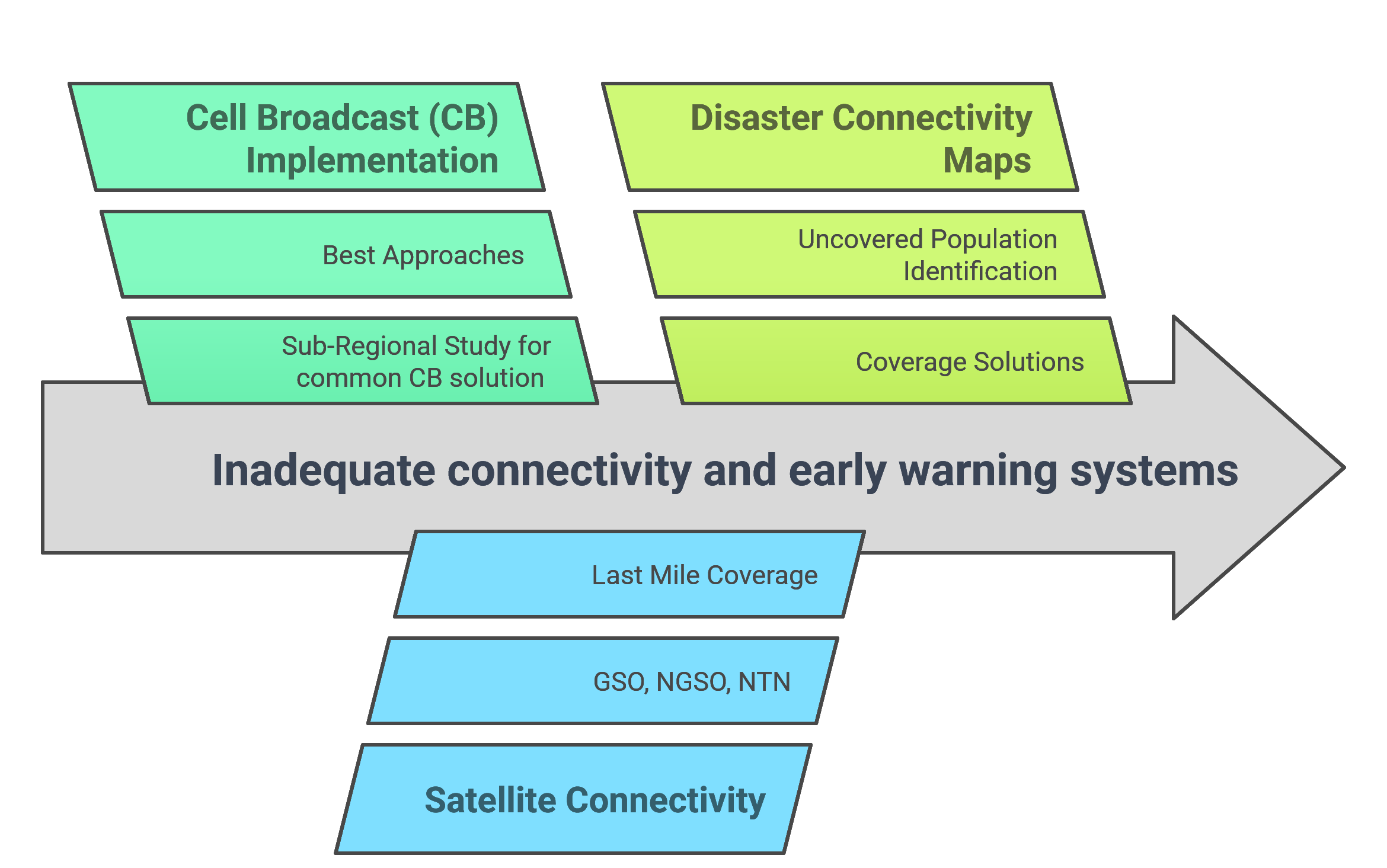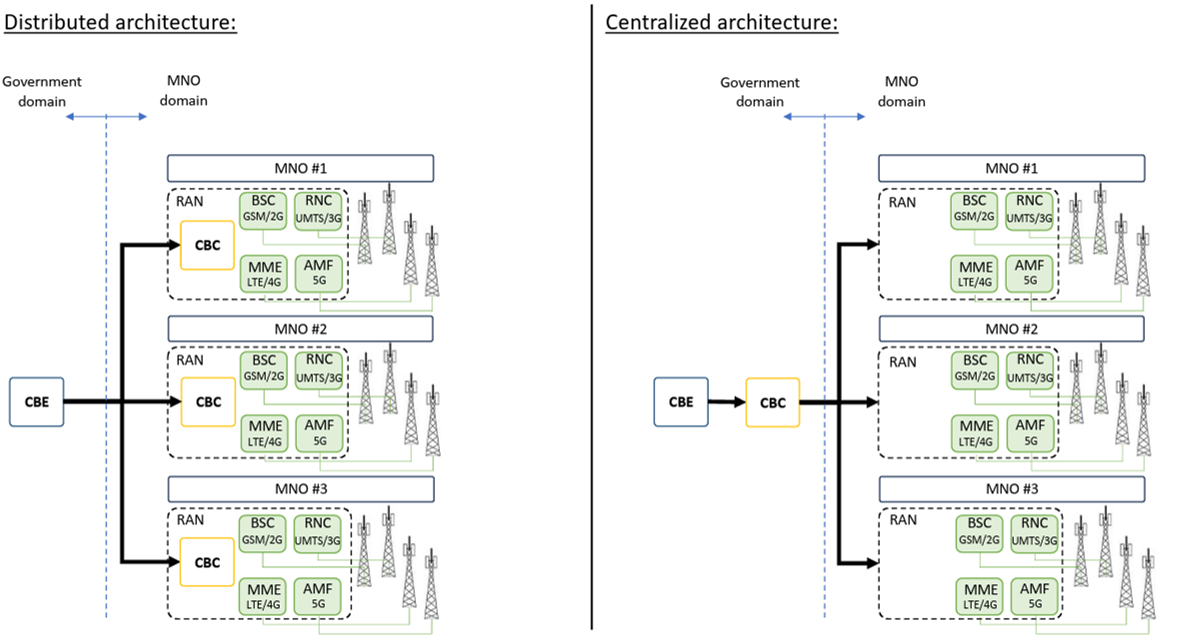Background
ITU and MIC Japan have been collaborating to develop resilience in Digital infrastructure in Asia and the Pacific region. The earlier collaborations have been in the form of 2 phases of the project already undertaken (Phase 1, and Phase 2). With increased demand from the region on the subject, especially the activities under Early Warnings for All (EW4A), the collaboration has been further extended in the form of Phase 3 of the project. The project would continue to leverage the outcomes of Phases 1 and 2 of cooperation and would support the implementation of a financial contribution by MIC, Japan, to enhance resilient ICT infrastructure in Asia and the Pacific under Phase 3.
Support for Early Warning Systems:
A Cell Broadcast System enables rapid, area-specific emergency alerts to all mobile devices, even during network congestion. Implementing it as a sub-regional deployment enhances cross-border coordination, reduces costs through shared infrastructure, and supports harmonized disaster response across neighboring countries.

ITU's Early Warning Connectivity Maps (EWCM) integrate AI with satellite imagery to create high-resolution population density maps and visualize connectivity data, highlighting areas where people are vulnerable to natural hazards due to limited access to emergency notifications. These results will inform data-driven decisions on warning dissemination strategies and guide mobile infrastructure investments to ensure that no one is left behind. Traditional broadcasting and next-generation satellite services, including those in geostationary orbit, non-geostationary orbit, and non-terrestrial networks, provide comprehensive network coverage across a territory. This is especially important for last-mile populations and areas beyond the reach of terrestrial networks. Regulators and policymakers must further harness these advancements to develop relevant national strategies.
Distributed CBC and centralized CBC architecture in Cell Broadcast Systems:

Project aims to:
Develop resilient and inclusive Early Warning messages dissemination and communication in Asia and the Pacific. The project impact is envisaged to achieve two core outcomes that will generate a meaningful impact. First, it will significantly strengthen the capacities of beneficiary administrations to adopt data‑driven policies for inclusive and resilient early-warning infrastructure and communication systems. By promoting centralized, interoperable dissemination platforms and standardized protocols, national institutions will be empowered to develop evidence-based warning dissemination strategies. Second, the project will build enhanced institutional capabilities by enabling administrations to harness broadcasting technologies, including cell‑broadcast systems and satellite communication solutions.
Together, these outcomes will support governments in delivering timely alerts, improving last‑mile coverage in remote and underserved communities, and establishing resilient infrastructure that is interoperable, scalable, and aligned with international best practices in emergency management and policy-making.
The project is scheduled to run for a duration of 32 months, commencing in the first quarter of 2025. This timeline allows for comprehensive planning, implementation, and evaluation phases to ensure the project's objectives are effectively achieved.